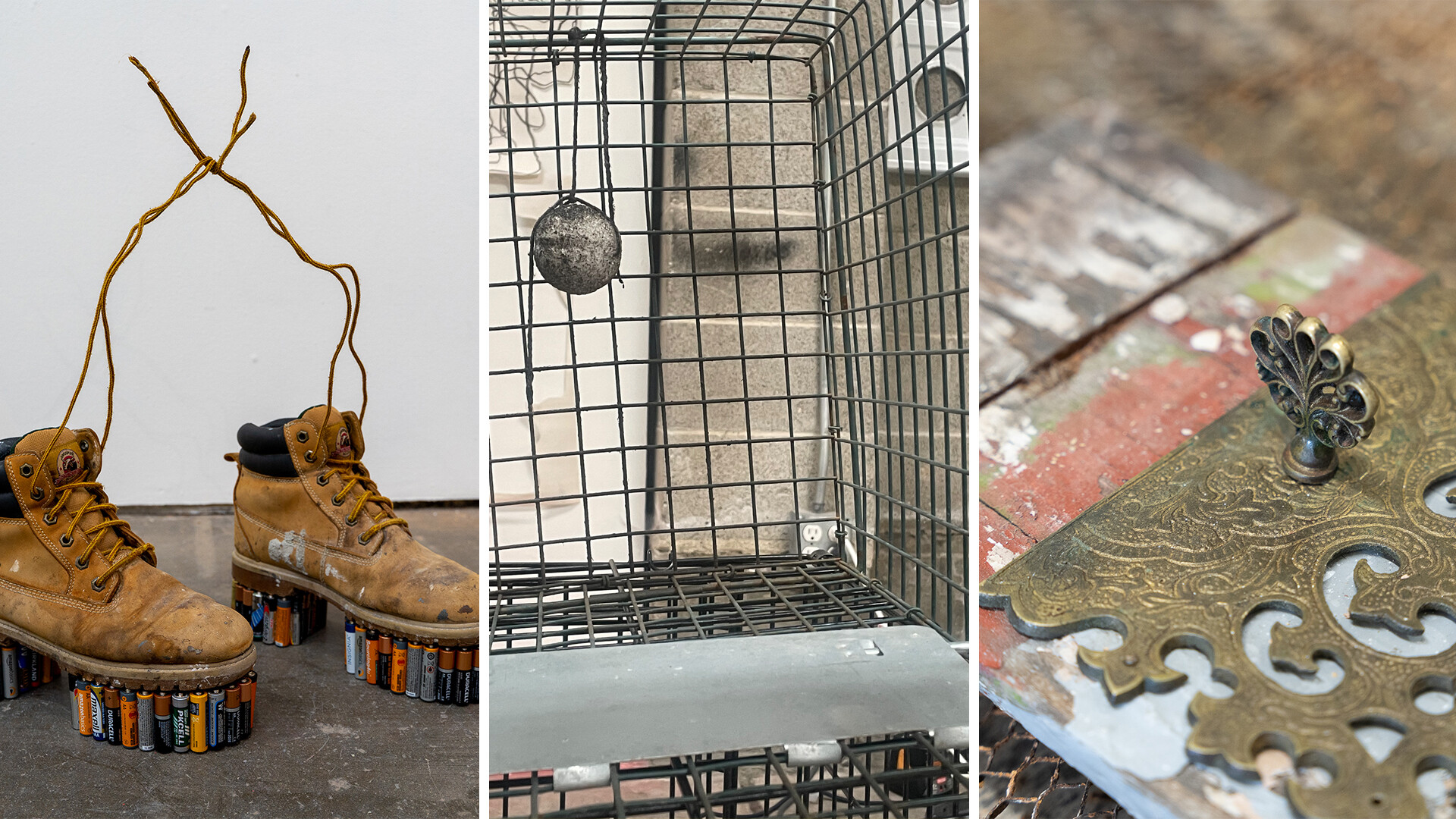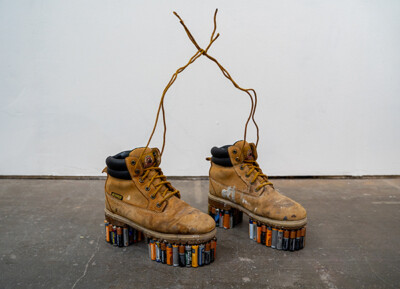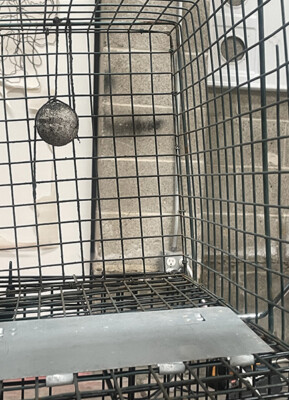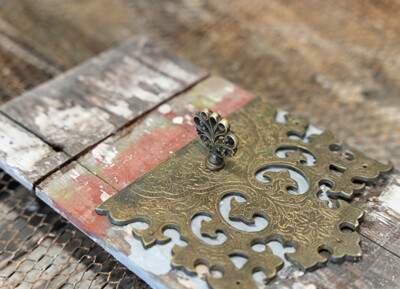
April 17, 2022
FOR IMMEDIATE RELEASE
The Artist in Residence Program at Recology San Francisco is thrilled to announce exhibition dates for current artists-in-residence Andrew Sungtaek Ingersoll, Sahar Khoury, and CCA student pair Nunca No (Claire Dunn and Charles Lee).
Friday, May 26 from 5 – 8 PM
Saturday, May 27 from 12 – 3 PM
Tuesday, May 30 from 5 – 7:30 PM with artist talk by Nunca No at 6 PM (401 Tunnel), Andrew Sungtaek Ingersoll at 6:30 PM (503 Tunnel), and Sahar Khoury at 7pm (503 Tunnel)
Location
Recology Art Studios
503 and 401 Tunnel Avenue, San Francisco
Admission is free and open to the public, no reservation required. All ages are welcome and the site is wheelchair accessible.

Andrew Sungtaek Ingersoll
recall recall
Written by Weston Teruya
Recall is a remembrance, the summoning of an idea to the forefront of our minds. A recall is also the request for products to be brought back for repair and adjustment. In recall recall, Andrew Sungtaek Ingersoll adapts existing objects with their own material histories to draw out and complicate the social and conceptual implications of the resulting work.
During his time as an artist-in-residence, Ingersoll embraced material serendipity and streams of intuitive logic. Using found objects, he plays off of the stories of past uses and social contexts carried in their forms. Instead of applying his pre-formed sculptural intentions to raw material, he embraces the revelations offered up by the objects while meditating on their excavation. The varied sculptural gestures Ingersoll has made–whittling away a wood post, adhering bundles of batteries to the soles of work boots, drilling antennae into a rock–refigure readings of the material. A support beam that formerly held up the frame of a stable home is carved away, revealing a fragility and precariousness underneath the domestic facade. The weathered construction boots-turned-platform shoes complicate expectations of gendered performance and labor. The antennae stone suggests a mimetic inversion of fake-tree cell phone towers and human-environmental impacts.
Another sculpture encapsulates Ingersoll’s responsiveness to the spirit and form of his found materials: a simple wooden chair with uneven legs taps out a steady rhythm as a weighted motor shifts the balance of the object, rocking it back and forth. The kinetic alteration gives a haunting presence to the sculpture and the restless persistence of its imagined history, asking us to imagine the social body that once resided upon it. The exhibition is full of these recollections, pulled forth through these repairs that allow the sculptures to speak with us through new incarnations.
Utilizing quotidian objects and elements from historical crafts and traditions combined through industrial processes, wood and metal fabrication, DIY robotics, and self-taught engineering, Ingersoll creates inventive objects, rituals, and installations.
Ingersoll has exhibited work at Delaplane Gallery, San Francisco Museum of Modern Art, R/SF Projects, Worth Ryder Gallery, and the ICA San Francisco. His public art is installed at Franconia Sculpture Park in Minneapolis and he has contributed scientific research to a published journal on the role of Buddhism and Hinduism within ecological landscapes in urban Kathmandu, Nepal. He holds a B.A from UC Berkeley and will begin his M.F.A at Stanford in the class of 25’
 Sahar Khoury
Sahar Khoury
Staged Life
Written by Weston Teruya
Sahar Khoury’s Staged Life is an index of overabundant, disposed material and an attempt at disintegration and compression–a tension between the desires to accumulate and to clear out space. While navigating the public reuse and recycling area at Recology, she observed the repeated actions of people with vehicles full of things to be thrown out and their eagerness to dump and break stuff as they made way for new belongings, next steps, loss, and different lives. The resulting exhibition is filled with rhythmic exclamations and silences in its mass of wire crates, a rack of boomboxes, and ground down and crushed objects.
One of the anchoring elements of the exhibition is an environment of stacked cages augmented with an array of additional materials jutting off of its edges. A small tag on one of the adjustable pet crates references phases of life and the wire container’s ability to accommodate your dog as they grow. These types of kennels posit that a young puppy needs a contained area to feel safe and are designed with a repositionable divider to create the appropriate amount of room over time. (One of my own dogs prefers to retreat to his crate when he’s feeling overstimulated and needs down time.) But while it might be a place of refuge, the wire structure, especially in its dense accumulation, also reads as a potential threat as we navigate the space around it. These are also tools of containment and a loss of freedom or bodily autonomy. The spectre of cages inevitably raises questions of their application and who is then constrained within them.
In the installation, Khoury creates a container for all of those tensions and multiplicities. This is a collection of the home and the cage, a repetition of products and unique characters, the desire to empty and as well as gather. As much she punctuates the exhibition with objects she attempted to obliterate, the pieces remain behind with a stubborn persistence. The fragments continue to serve a reminder of the steps that came before.
Sahar Khoury was born in Chicago, IL and lives and works in Oakland, CA. Trained as an anthropologist and working for many years on community-based research projects concerning structural vulnerability within Latinx migrant labor communities, Khoury did not receive a formal art education until later in her career. Rather, she developed her practice within the Bay Area’s queer community of the late 1990s and 2000s, making works for music shows, theater performances, and street protests.
Khoury’s work has been exhibited at the San Francisco Museum of Modern Art (where she was the recipient of the 2019 SECA Art Award), Yerba Buena Center for the Arts, Oakland Museum of California, the Wattis Institute, UC Berkeley Art Museum, Scripps 77th Ceramic Annual, Rebecca Camacho Projects, and CANADA Gallery. She received her B.A. in Anthropology from UC Santa Cruz in 1996 and her M.F.A. From UC Berkeley in 2013.
 Nunca No (Claire Dunn & Charles Lee)
Nunca No (Claire Dunn & Charles Lee)
The Act of Opening
Written by Weston Teruya
Nunca No’s The Act of Opening welcomes us into the sculptural dialogue between the two artistic collaborators, Claire Dunn and Charles Lee. The exhibition posits a series of questions and speculative proposals channeled through their interconnected and reconfigured artworks. While gathering materials, the artists were struck by the markers of class stratification and division throughout the pile of disposed goods. If everything eventually ends up discarded in the same place, scarred by being roughly tossed into the big pile of our material excess–luxury decor, modest home goods, personal correspondence, an old magazine–entrenched ideas about monetary value become irrelevant. And in the end, the divisions between us are collapsed into the same heap of trash. Dunn and Lee therefore ask, “What do we have left with us after our belongings make their way into the dump? What impact have we had on the world beyond our consumption and accumulation of stuff?” Through their work, Nunca No challenges us to consider how the symbols of material value socialized us within capitalism. Whether the ornate fixtures of an old mansion or a rough hand carved frame, these things teach us desire and alienation–the parameters within which we are expected to navigate in proper society.
Dunn and Lee’s mysterious sculptures invite new interpretations that encourage generosity, support, contemplation, and spiritual fulfillment. A number of pieces in the installation have been painted gold, a tint that often brings to mind accumulated wealth and environmental extraction, but also a color that the artists note has symbolic value in their meditative study and practice, suggesting energy, spiritual power, and enrichment beyond material. One of the sculptures takes the form of a damaged mirror with a rebuilt, ornate frame, evoking the magic mirror of fantasy fiction–the reflective object called upon for narcissistic consultation by an evil witch. Here Nunca No flanks the mirror with two small cabinets, one an intake box where visitors can leave their questions, and the other with small messages of affirmation that audiences are free to take with them. A mirror doesn’t have to inherently be a tool for vanity or corruption, so what questions do we want to be asking of ourselves when we step up to our reflection? Nunca No’s work offers up tools for introspection with the hope that self-knowledge will be a step toward connection across the class stratification reinforced by the products we’ve accumulated and thrown away.
Nunca No is a collaboration between two interdisciplinary artists, curators, and romantic partners: Charles Lee & Claire Dunn. They began collaborating on paintings as a way to learn about each other’s cultures. With Dunn being from Argentina, and Lee, a Black man from the U.S., they focus on cultural differences and similarities that they are eager to learn about and incorporate into both of their daily lives, deepening their understanding of one another. Lee, originally a lens-based and assemblage artist, learned painting from Dunn. Dunn, originally a painter, learned about analog photography from Lee. Their work is about exchange and perspective. Claire Dunn transforms cells into galaxies (or have they always been one and the same)? Charles Lee lingers on the delicate borders between interior and exterior, self and world. Lee and Dunn are both current M.F.A candidates at California College of the Arts.
About the Artist in Residence Program
The Recology San Francisco Artist in Residence (AIR) Program is an art and education initiative that awards Bay Area artists access to discarded materials, an unrestricted stipend, and an individual studio space. These resources, along with comprehensive support, are provided to artists while they create a body of work and host studio visits during their four-month residency at the San Francisco Transfer Station.
Since 1990, over 150 professional artists and 50 student artists from local universities and colleges have completed residencies. Selected artists have worked across disciplines—including new media, video, painting, photography, performance, sculpture, and installation—to explore a wide range of topics.
The Recology AIR Program encourages the conservation of natural resources by providing artists with time, space, and reusable resources to create a new and impactful body of work. The Program further aims to create a more diverse and inclusive residency that amplifies perspectives from Bay Area communities and inspires children and adults who engage with the program to re-imagine their role in creating a just and sustainable world.